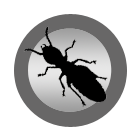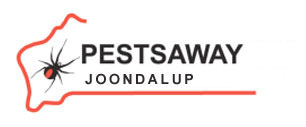 Termites, or white ants, are social insects that live together in colonies ranging in size from a few hundred individuals, to thousands or even millions. Termites are typically pale brown or white in colour, have long bodies that appear constricted at the neck and six slender legs. Although referred to as white ants, termites differ from true ants as they are lighter in colour, have no waist between their thorax and abdomen, and have beaded antennae.
Termites, or white ants, are social insects that live together in colonies ranging in size from a few hundred individuals, to thousands or even millions. Termites are typically pale brown or white in colour, have long bodies that appear constricted at the neck and six slender legs. Although referred to as white ants, termites differ from true ants as they are lighter in colour, have no waist between their thorax and abdomen, and have beaded antennae.
Termites feed on wood and other cellulosic materials including trees, logs, stumps and grasses, however will also eat the wooden structures and fittings found in private residences and commercial buildings. Termites will travel considerable distances from their nests (up to 50m is common) in search of food, therefore it is important to note that termite infestations may originate from beyond the boundary line of residential or commercial properties.
Across Australia, most termite damage is caused by subterranean termites. These termites build their nests either above or below the ground, depending on the availability of water, and then tunnel through the soil in search of food. Once a food source is located, the termites construct mud shelter tubes up the outside of the structure to gain access.
Termite infestation can cause considerable damage to the structure of homes and businesses, and can be very expensive to repair. In Australia, subterranean termite damage is estimated to cost more than $100 million per year.
Types of Termites
Across Australia, there are approximately 250 species of termites, however only five species are considered pests in urban areas. Throughout Joondalup and the northern suburbs of Perth, most termite problems are caused by:
- Coptotermes Species
- Heterotermes Species
- Mastotermes Species
- Nasutitermes Species
- Schedorhinotermes Species
Problems caused by Termites
Termites are best known for their damage to wooden structures and buildings, however can also cause extensive damage to plasterboard, carpets, electrical insulation, sealants, built-in fixtures (such as bathroom cupboards), books, artworks, and even clothing in their search for food. Furthermore, termite damage can be difficult to locate as, once termites have gained access to a wooden structure, they devour it from the inside out, taking care to minimise damage to the outer surface in order to protect their tunnel network.
If you have concerns about termites, please call WA Pestsaway Joondalup on 0419 374 374

